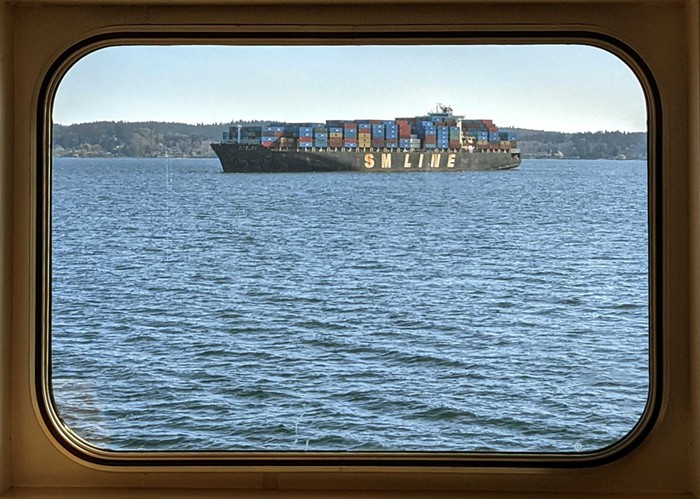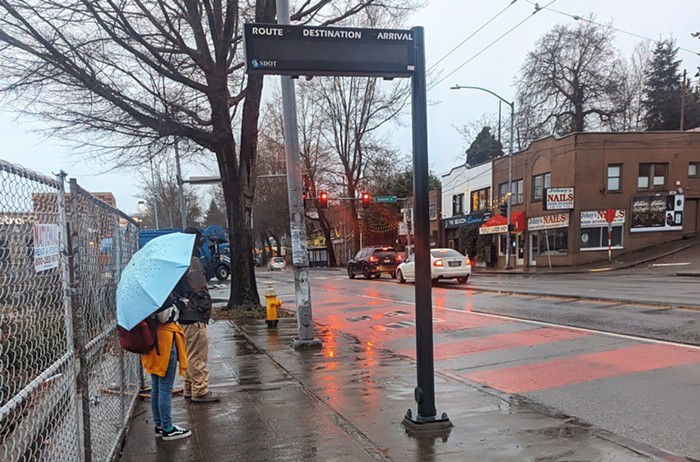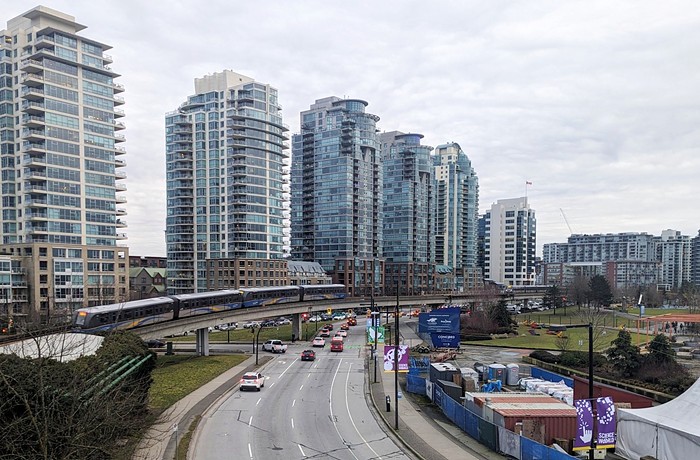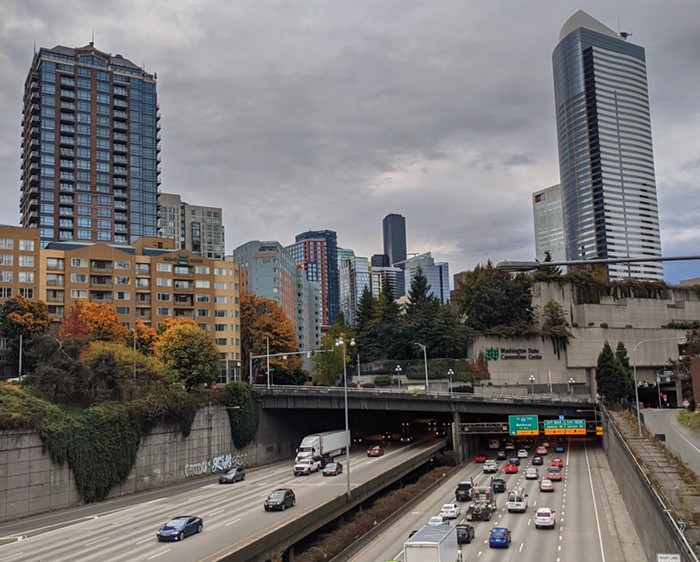
The light rail stations at Capitol Hill and UW have had a transformative impact on mobility in Seattle. Sound Transit, the agency that runs them, has done an admirable job keeping them clean and well kept. Older stations in New York and Chicago feel like medieval dungeons by comparison. The UW station even won a national Honor Award from the American Institute of Architects last year.
But this isn’t to say there aren’t problems. One fundamental issue is the escalator configuration at each of these deep-bore stations. Each station was designed by a different highly capable architecture firm, and each design team presumably researched precedents of other deep stations around the world (if my assumption is wrong and they didn’t, then shame on them). But each station ended up with the same design flaw, so if Sound Transit didn’t insist on this configuration, they at the very least approved it.
At most deep-bore stations around the world, the long escalators to get down to the platform are grouped into banks of three, four, or more. This provides operational flexibility and redundancy in the event one or more escalators are out of service. At London’s Canary Wharf station, shown above, the escalators at the main entrance are grouped into a large bank of five units. Washington Metro uses a similar approach, as do numerous other systems throughout the world.
Escalators are machines, and machines break. Even if Sound Transit had specified the most bulletproof escalators available and maintained them with the most rigorous service regimen possible, the escalators would still experience occasional downtime. Parts wear out, electrical components fail, and shit happens. Nobody expects perfection. But Sound Transit built the Capitol Hill and UW stations as if each escalator would always be operating 100% of the time.
The UW train platform is accessed via two pairs of long escalators—one escalator at each end going up, the other going down. If one escalator stops working, half the station is essentially inaccessible. If more than one escalator fails, the entire station is functionally crippled, resulting in scenes like this past August, when over 200 people were trapped inside the UW station waiting to exit. If there had been a fire or other incident on the platform that required the station to be quickly evacuated, this would’ve been a disaster, requiring riders to locate (somewhat hidden) emergency stairwells.
Wherever long escalators are required to travel between the train platform and street level, redundant escalators should be provided. This could have been accomplished with a single bank of at least four escalators, or two banks of at least three escalators, etc. With a bank of four escalators, one escalator being out of service would be a minor inconvenience at worst. Even with half the escalators out of service, access to and from the station could be maintained.
Such a four-escalator configuration also offers operational flexibility to handle peak loads traveling in one direction, such as before and after sporting events or a big concert: Before the event, three escalators could be operating in the up direction and one operating in the down direction; after the event, vice versa.
Beyond the number of escalators at each station, there is also the issue of the escalators themselves. Broken escalators have been a near-constant bane to riders using the Capitol Hill and UW stations since their opening in 2016, to the point that Sound Transit is already planning to replace all 13 escalators at UW less than four years after that station’s completion.
Manufacturers offer a range of models for new projects, generally some variation of good, better, and best. At the “good” end of the spectrum, we have light-duty escalators for indoor applications and relatively low traffic volumes, such as department stores. At the “best” end of the spectrum, we find heavy-duty escalators designed for outdoor use, large crowds, and mission-critical operational needs. If you think the latter criteria describe deep-bore rail stations, you’d be correct.
But Sound Transit apparently felt differently back when planning the Capitol Hill and UW stations. According to a source familiar with the design process who declined to be named for this article, Sound Transit insisted on specifying medium-duty “better” escalators at these stations as a cost-saving measure, and then cobbled together a myriad series of customizations to bring them up to heavy-duty standards. As we now know, the reliability of these Frankenstein escalators hasn’t exactly been stellar, and Sound Transit will soon spend a fortune to replace them with more robust, off-the-shelf models. Some old adage comes to mind about how it’s better to do something right the first time than to do it over again.
A few years ago, I was the project architect for a high-rise renovation project in New York City while living in Manhattan’s Washington Heights neighborhood. During this period, I was also dealing with a torn labrum in my right hip that sometimes made walking on flat sidewalks excruciating, to say nothing of going up a long flight of stairs.
The subway station closest to my apartment was the 181st Street Station on the A train. Due to the Seattle-like topography of Upper Manhattan, this is a deep-bore station more than a hundred feet below ground. One end of the station is connected to surface streets via three large elevators, and the other end is connected to surface streets via three long escalators and a staircase.
The subway station closest to my office was the Broadway-Lafayette station in SoHo, and my train arrived on the lowest level. This is one of the 25% of subway stations the MTA bills as being ADA-compliant, but the elevators were frequently out of service and always smelled like excrement, and using them would’ve required walking more than a block out of my way. On days when my hip pain was somewhat manageable, I opted to slowly make my way up the two steep staircases to street level.
Since my project at work involved the renovation of a historic office tower, including the replacement of its many elevators, the elevator consultant and vendor were critical members of the project team. But on the rare occasion the elevator vendor’s representative bothered to show up for our weekly site meetings, he usually spent his time surfing Facebook on his iPhone while casually ignoring the meeting agenda, and on the rare occasion he engaged in the conversation, he’d grunt a few words blaming somebody else for any elevator-related issues on the project before turning his attention back to Facebook. After leaving the meeting, he presumably got into a luxury car and made a beeline for a house in the Hamptons. The rest of us at the meetings were left wondering how we had each picked the wrong major in college.
I won’t disclose the name of this particular elevator company, but I will disclose that they’re also a contractor for Sound Transit. Not that it really matters: Thanks to industry consolidation, only four major elevator and escalator companies now operate in the US, and they’re each in a position to name their price while providing substandard products and service. The owner of any public facility with two or more floors is at their mercy, especially during boom periods when lots of construction is happening.
My time in New York comes to mind whenever the subject of Seattle’s broken escalators comes up. Some transit advocates have proposed eliminating escalators from stations altogether, or reverting back to the era of shallow cut-and-cover stations like those found in much of New York. Neither of these ideas is remotely realistic. Seattle’s waterways and hilly topography make deep stations inevitable in many cases; it’s not as if Sound Transit builds stations a hundred feet below ground for shits and giggles.
Along with labor standards and construction technology, ideas about universal design and accessibility have also improved for the better. Elevators have a critical role to serve, and at low-traffic deep stations such as Beacon Hill, provide the only means for accessing the train platforms. At high-traffic stations like UW, though, with a major university campus and a 70,000-seat football stadium outside the station entrance, elevators simply can’t move that many people at once.
Ramps have the capacity to move large crowds, but they aren’t feasible for more than a few feet of elevation change; an ADA-compliant ramp serving the UW station would need to be nearly a quarter-mile long.
All these factors combine to make escalators the default workhorse for moving large numbers of people efficiently up and down large vertical distances, and they also serve people with mobility impairments who can’t easily handle stairs but who don’t necessarily require elevators. There’s a vast range of abilities between being fully able-bodied and a full-time wheelchair user. The percentage of people who will experience mobility impairment at some point in their life, even if just temporary, is approximately one hundred. Even somebody hauling luggage back from the airport is grateful for functional escalators.
Hopefully Sound Transit has taken recent painful lessons to heart in the design of future light rail stations. What needs to happen going forward:
These escalators aren’t fluff; they’re a critical part of accessibility and mobility for our transit infrastructure, which makes them a civil rights issue. They need to be treated as such.


















